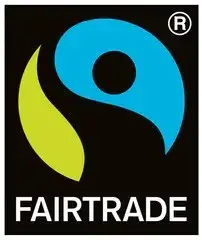Consumption without child labor:
Nuts, spices, fruits, juices
Almost 70 percent of child workers work in agriculture worldwide. Most of them help on the parental farm, guard animals or help with the harvest. About ten percent of the child workers works for export, i.e. on plantations and farms that produce for the world market. Hardly any fruits or vegetables, spice or grain are not also grown and harvested by children.
In Turkey, for example, according to the American Ministry of Labor, children work for cultivation and harvesting cotton, hazelnuts, citrus fruits, sugar beet, cumin, peanuts, lentils, apricots, melons and cherries. According to the private National Farm Workers Ministry, between 500,000 and 800,000 children work in agriculture in the United States. There are no exact figures and Human Rights Watch denounces legal gaps that allow 12 years to work full-time on farms.
Child labor in agriculture is often difficult and dangerous, because children wear large loads, have to rise on shaky ladders, use sharp machetes or knives and work from sunrise to sunset and thus far too long. They are often also exposed to poisonous fabrics, such as pesticides and fungicides. In the USA there are around 4,700 accidents of work for children in agriculture , some of which are even fatal.
75 percent of the hazelnuts grown worldwide grow in Turkey. During the harvest time between August and September, hundreds of thousands of migrants pick. According to the Rainforest Alliance certification organization, 40 percent of the harvest workers between 15 and 18 years old and ten percent younger than 14 years are, a total of around 200,000 children and adolescents work at the hazelnut. They often move to the nut harvest with their parents. Many of them are Kurds from the poor east of Türkiye, refugees from Syria or Iraq. Harvesting nuts is difficult work and is therefore prohibited for minors in Turkey.
Children work at the orange harvest in Brazil, the largest growing country for oranges. Children are also always used on banana plantations. Because the jobs are rare and people are poor, most pickers work to hunger and chord. Whole families often move from harvesting to harvest. A total of about half of the 998,000 Brazilian child workers in agriculture work with cultivation and harvesting from Acai, bananas, citrus fruits, cocoa, coffee, corn, cotton, maniok, mate tea, pineapple, rice, sisal, sugar cane and tobacco. Child labor on banana and orange plantations is one of the worst forms of child labor. Work is too difficult for children and sometimes dangerous and dangerous to health because they come into contact with toxic substances (pesticides). The worst forms of child labor are prohibited in every country in the world.
The market price for spices often do not even cover the production costs. documented when growing and harvesting from various spices :
- Cuminy in Turkey
- Chili peppers in Mexico and India
- Garlic from Argentina
- Sesame from Paraguay
- Vanilla from Madagascar and Uganda
Further human rights risks and environmental pollution
Adult agricultural and harvest workers often work a lot of overtime, are paid far below the minimum wage and do not receive any social security, such as health or accident insurance. This is one of the reasons why parents consult the children to work: together they harvest more and get a little more money. Harvest helpers are often migrant workers and are not registered at their place of work. In this way, the farmers and their communities do not feel responsible, for example for health care or for the care of the children. The harvesters often live in temporary tents without clean drinking water or sanitary facilities and without any care or educational offer for the children. The use of pesticides when growing spices and fruits in particular damage the agricultural workers who are exposed to different poisons every day without knowing it.
Agriculture is a main driver for the global loss of biodiversity and is responsible for about a third of the entire greenhouse gas emissions. Non -sustainable intensive agriculture, factory farming, the conversion of forest into arable land (for example for the cultivation of soy and palm oil) lead to massive ecological damage.
You can pay attention to this when shopping:
Fair trade products
Fair trade offers bananas, spices, nuts, dried fruit, juices and smoothies, wine and flowers. Fair trade supports small farmers and plantations that adhere to basic labor rights, such as the ban on exploitative child labor. In contrast to social seals, fair trade pays higher prices for agricultural products: small farmers and plantation workers earn fairer wages. The better payment alone works against child labor. Because parents who earn enough can send their children to school and do not have to take them to work in the field.

In addition, fair trade pays a surcharge. Cooperatives, for example, finance schools or medical stations. Many Fairtrade products come from organic cultivation. Compared to conventional products, many Fairtrade products have a cheaper climate balance.
Fair trade products can be found in almost all supermarkets, in organic and world shops, in online shops and delicatessen.
Further information: Fairtrade product and dealer finder :
Other Fairtrade certificates and dealers:
- GEPA - The Fair Trade Company
- El Puente
- World shop
- Fair for Life
- Ethiquable
- Naturland fair
- Contigo
- Weltpartner eG
Rainforest Alliance
The green frog on the seal of Rainforest Alliance stands for sustainable agriculture and the preservation of biodiversity. The Rainforest Standard contains ecological and social criteria, including the core work standards including the ban on child labor, integrated environmental management systems, water and animal protection.

